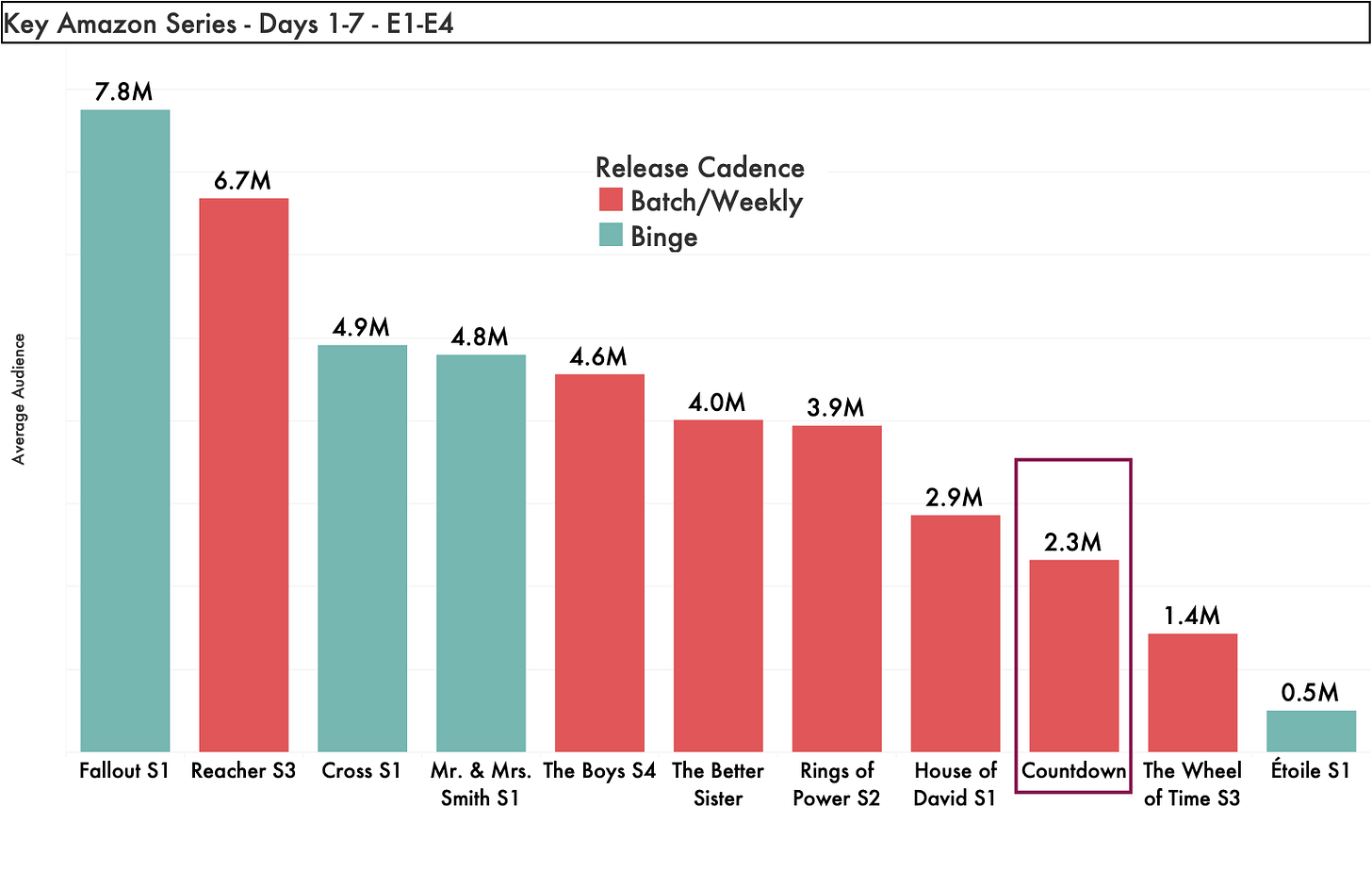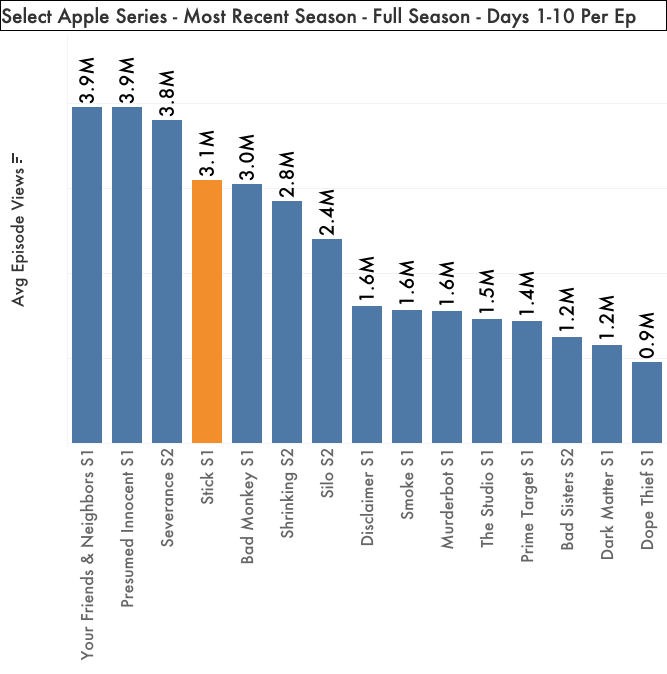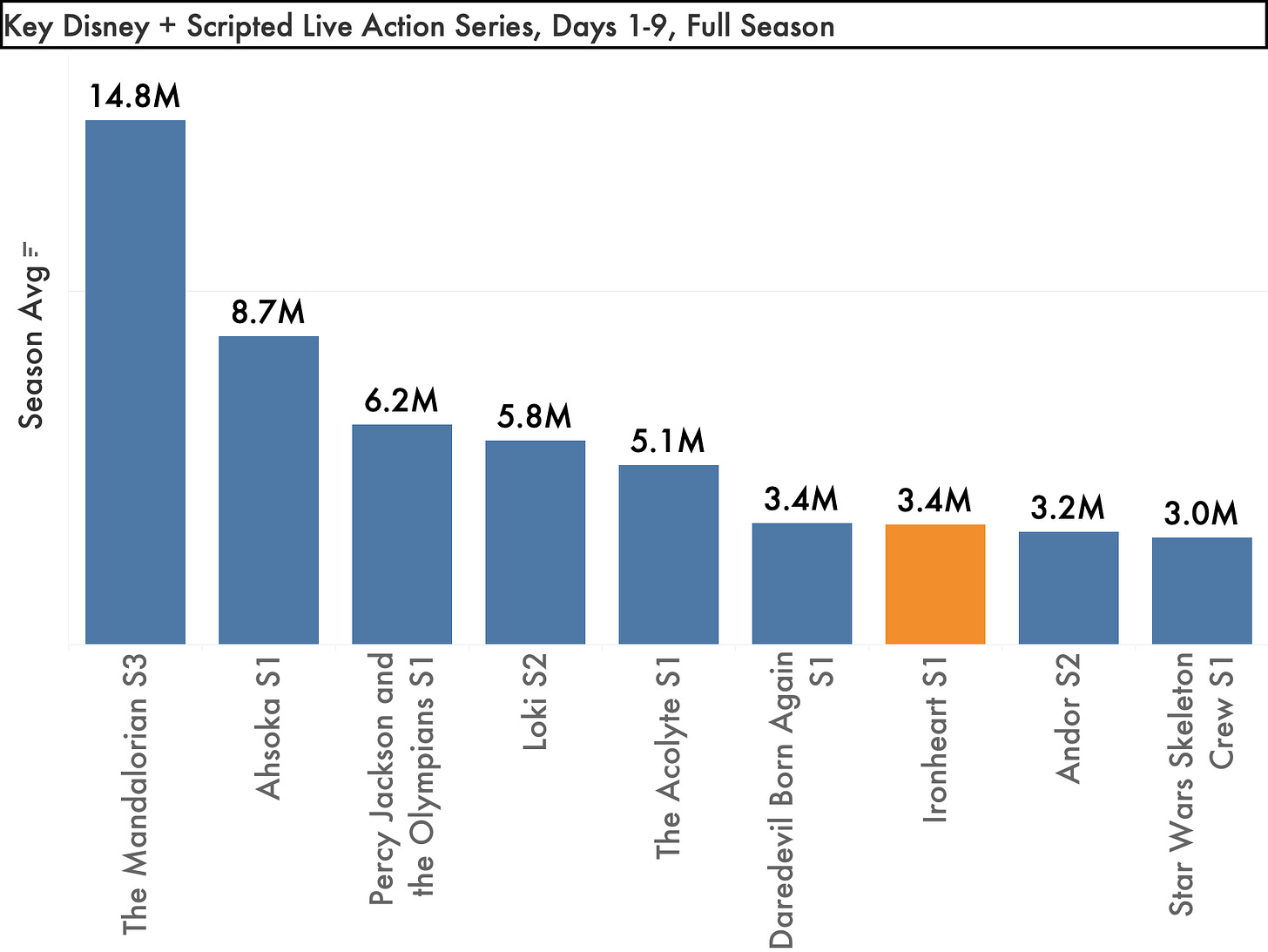"How Are They Doing?" Countdown on Amazon, Stick on Apple, Ironheart on Disney+
And some follow-up on on HBO Max's Duster and how its cancellation sheds light on a dirty little secret about how TV researchers often have to give false hope.
Countdown On Amazon
Amazon’s release strategy for streaming originals is one of the most confusing. In the last few months it released the action show Countdown with three episodes at launch then the remaining 10 episodes weekly; the new Bosch-universe series Ballard just dropped as a binge; The Better Sister was a binge in May; while S3 of The Summer I Turned Pretty next week will start with two episodes and then go weekly. While this can cause confusion for those watch a significant amount of Amazon I have not found in all of my streaming analyses over the last six years that it impacts viewing levels. Once a show finishes its run there is no reason to believe it would have done significantly better or worse had it been batch/weekly instead of binge or binge instead of batch/weekly.
The chart below is designed to showcase the performance of Countdown - a rare action/drama series for Amazon as it has no IP basis - but it also illustrates how release cadence does not matter. There are successful shows, middling shows, and failures of both release types .
For the first seven days of viewing across the first four episodes (to orient around Countdown’s availability at the time of the analysis) according to Luminate, Countdown is a weak performer with 2.3M viewers, number #10 out the 11 key series in the chart below.
The element that does clearly drive performance is IP association as all of the top series have that basis. Countdown and Etoile, the only two true original concepts on this list are also two of the three lowest-rated.
The takeaway here is that while IP does not assure success for Amazon Prime (see Wheel of Time, Rings of Power) it seems difficult to achieve it without IP.
We will see where the new Bosch-universe show Ballard appears in a similar ranker next week although I can say that after three days it’s not looking good.
Source: Luminate
Stick on Apple
The Owen Wilson golf-themed comedy is a strong performer for Apple with 3.1M viewers across the first 10 days of viewing per episode. This puts it just under the recent “tier one” Apple TV seasons such as Your Friends & Neighbors, Presumed Innocent and Severance and in line with “tier two” such as Bad Monkey and Shrinking S2. I am surprised that we have not heard about a S2 pick-up yet.
Source: Luminate (Note: Ted Lasso S3 not includes as too long ago and always an outlier)
Ironheart on Disney+
A Marvel limited series based on a character featured in Black Panther 2 in addition to Marvel Comics was released in two weekly batches of three episodes at the end of June.
After nine days of viewing Ironheart is a mediocre performer compared to other Disney+ series from either the MCU or Star Wars IP universes. The series has averaged 3.4M viewers in that time frame which puts it in-between Daredevil: Born Again and Andor S2 - both under-performers.
It’s no secret that Marvel and Star Wars originals on Disney+ have delivered diminishing returns and outside of the surprise success of Ahsoka nothing has seem to turn it around. This is especially apparent in the chart below when you compare those recent seasons to the gold standard of Mandalorian.
When you consider how little original scripted programming there is on Disney+, one has to wonder if they even need it to attract or retain subscribers at this point given the loyalty to the brand in so many other ways.
Source: Luminate (Note: Andor S2 excl E1 due to data issues - does not impact story)
I was disappointed to read that Duster on HBO Max has been cancelled as I really enjoyed the first and only season.
However it is not a surprise given the results I published in a prior “How Are They Doing?” Substack post. That analysis covered the first ten days of viewing per episode which brings up another topic about the business of TV performance analysis.
When low data comes in TV researchers often tell their clients - who can be emotionally tied to the content they have worked on & also don't like to hear bad news - that it's too early to know the true story and we have to wait for all the delayed and streaming to come in. Sometimes this is true - especially when a Broadcast show is on Hulu like High Potential - but the truth is that most of the time the early days DO tell the story. Over the last 30 years analyzing television data - linear and then eventually streaming - I would posit that 9.5 times out of ten initial low numbers stuck.
Initial high numbers, however, can often be deceiving. It is common for people to check out a TV show and then find it is not for them and not tune in again. It is much rarer for people to not have watched show and then find it, en masse, over time. It happens of course - Cheers and Seinfeld are great examples of why you don't want to react to low data too quickly and you can try some actions to improve the situation. But you should not get your hopes up that the story will change for the better when a show starts poorly - it most likely will not.





